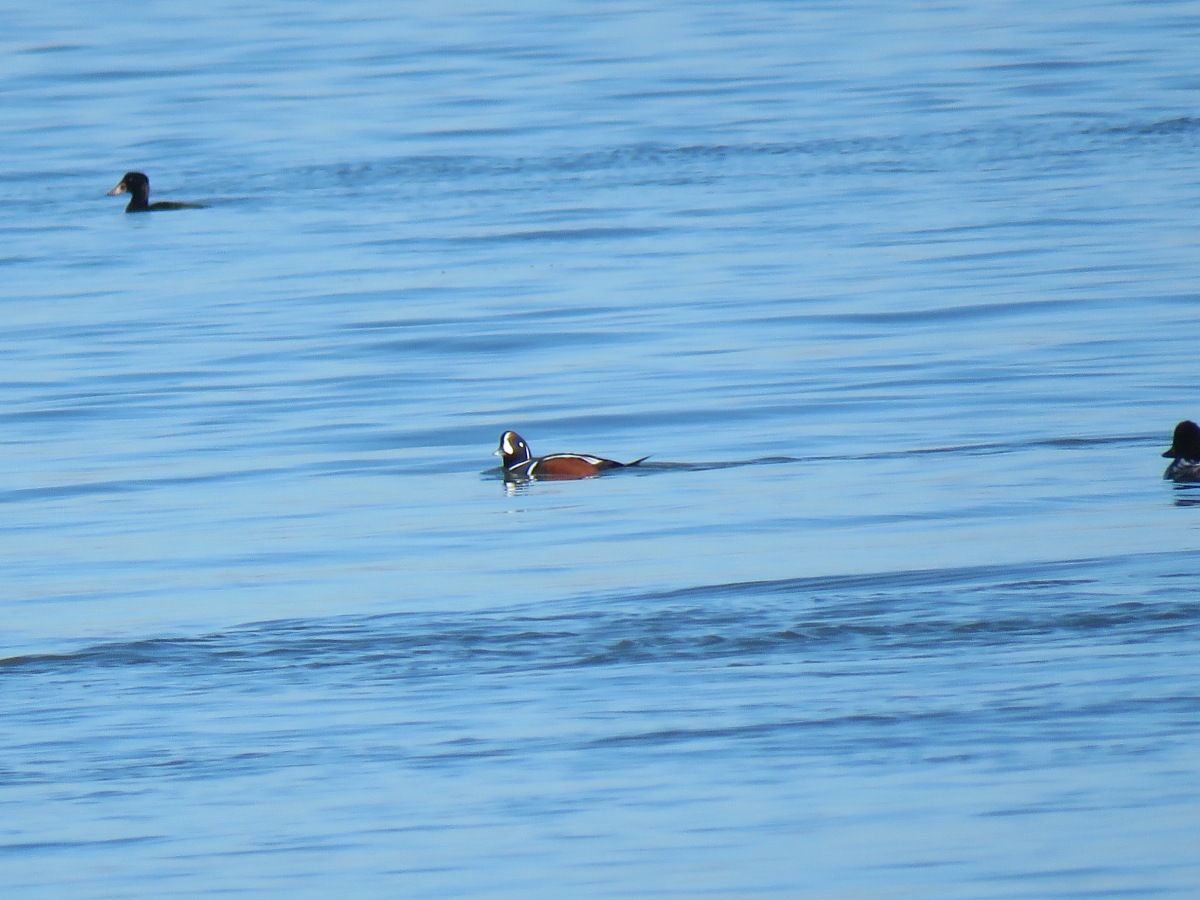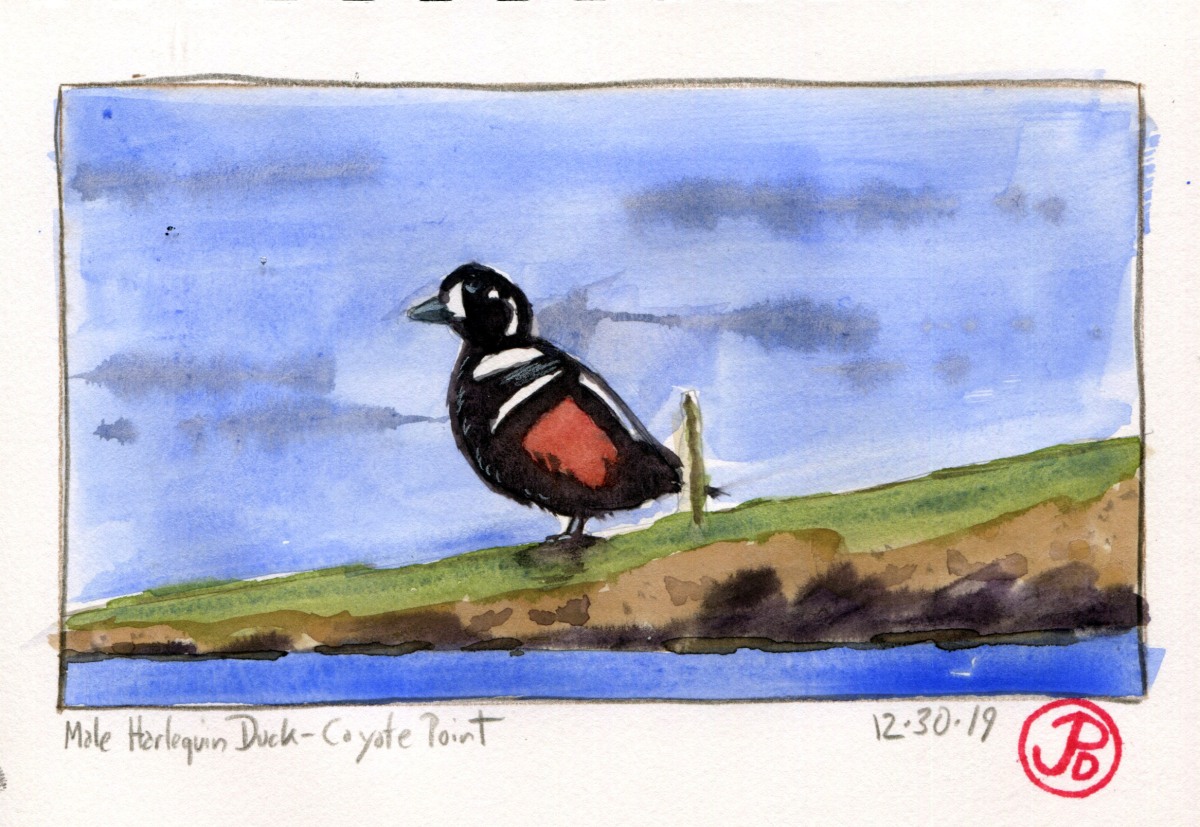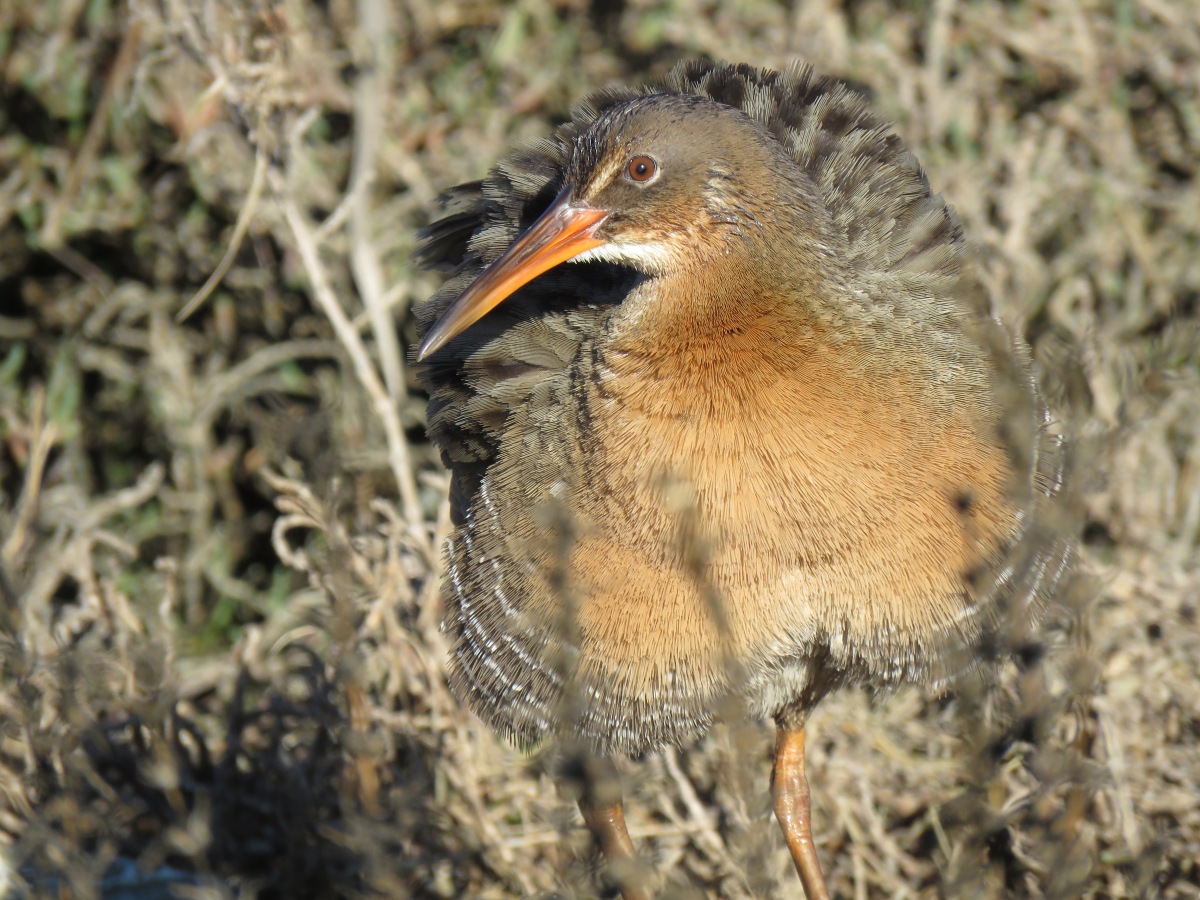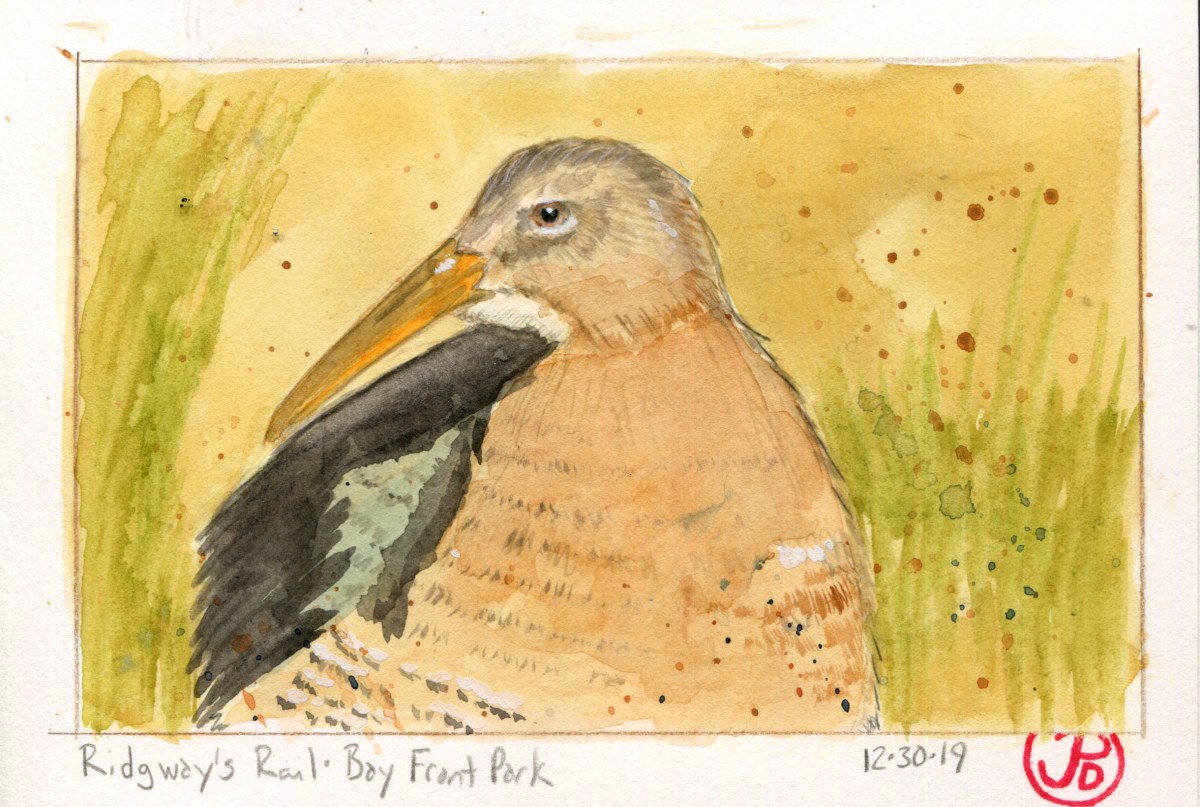On a clear and calm Sunday morning, I picked up Grasshopper Sparrow to make our fourth and hopefully last attempt, to see the over wintering male harlequin duck at the Coyote Point Marina. We had perfect conditions with calms waters and the sun at our backs, now all we needed was a little luck and a lot of patience.
We walked out to the end of the path and started to scope the bay waters, picking through the hundreds of scoters and goldeneyes to find the one bird that really should stand out. A duck with bold white markings and a reddish side. I checked the waters to the south while I let Grasshopper’s young eyes scope the waters to the east, just beyond the breakwater.
“I got the harlequin!”, he announced shortly afterwards. Of course he did. I looked though the scope and the bird had disappeared under the waters, which is no surprise because it is a diving duck. I asked him what the duck looked like.
“A harlequin duck!”, I told him that description wouldn’t cut it in the birding world and pressed him to recount details. He described the white facial patterns and colored sides. And just the confirm himself, the harlequin returned to the surface and I was able to get great views in amazing light.
 The Bay Area rarity was finally ours. Male harlequin duck just beyond the breakwater at Coyote Point Marina.
The Bay Area rarity was finally ours. Male harlequin duck just beyond the breakwater at Coyote Point Marina.
The duck briefly perched on the breakwater and preened and I was able to get a few photos off to use for a painting study.

Our next stop was to Bayfront Park in eastern Millbrae. Our target bird here was an iconic species of the bay marshes, a bird that has been declining in the bay because of development of the bay’s shoreline (meaning the destruction of it’s favored habitat) and is now near-threatened. This is Ridgway’s rail (formally the clapper rail). It’s estimated population around the San Francisco Bay is about 1,100 individuals. So seeing a Ridgway’s is always special.
Bayfront Park is a small marsh, preserved near the Bay Trail. It sits just across the waters from the runways of SFO. So here I can really indulge two of my passions: birds and airplanes! I guess the two are really related. But perhaps not the Rigway’s rail, which seldom flies.
 Touchdown for a massive A380 at SFO. A raft of ducks are in the foreground, apparently not disturbed by all the air traffic.
Touchdown for a massive A380 at SFO. A raft of ducks are in the foreground, apparently not disturbed by all the air traffic.
The tide was high, meaning that all the bird activity was very concentrated, which could be good for finding rails. Rails are very skulking birds that can be notoriously hard to see. Most of my rail sightings had been brief and unspectacular. But that was just about to change.
We scanned the shoreline and the pickleweed for rails but we found none. The somewhat reclusive birds could be right under our noses and we might never see them. We put in a good 45 minutes of searching and we did not hear or see any. We started to head back to the car when I decided to check one last time. That’s when the loud call of the Ridgway’s rail sounded from some tall reeds about ten yards from the Bay Trail.
We fanned out on either side of the reeds, willing a rail to appear. Again, Grasshopper found one, it’s head raised above the reeds. The rail stayed visible, in perfect light for a good five minutes, allowing me to take some photos and just as quickly as the rail had appeared, it disappeared. As if on cue, Grasshopper found a second rail, just to the north of the reeds, in pickleweed. The bird also gave us astounding looks!
Lifer for Grasshopper and a San Mateo County lifer for me.

